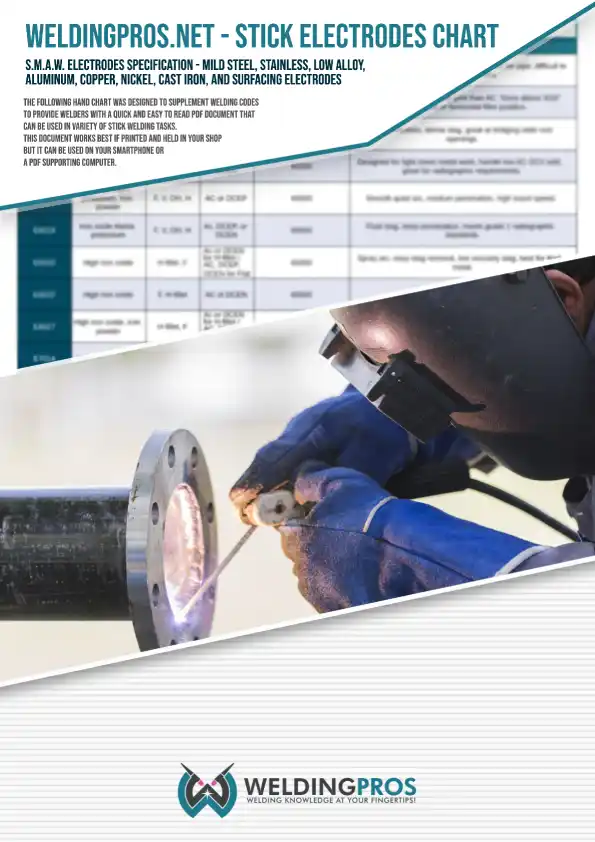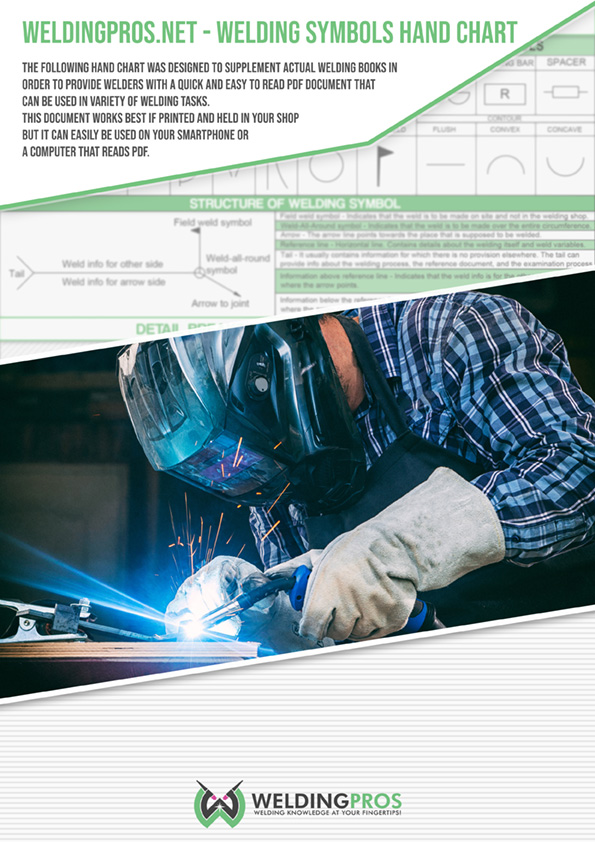Submerged arc welding (SAW) is often referred to as a high productivity process that is usually automated/mechanized in its form. In addition, SAW might be considered the most straightforward application of the process that uses a single wire.
So what is submerged arc welding, how does it work, what equipment does it require, and what are the benefits and drawbacks?
![Submerged arc welding [SAW] - advantages and drawbacks 2025 1 Featured image for the Submerged Arc Welding article](https://weldingpros.net/wp-content/uploads/2022/04/Submerged-Arc-Welding-1-1024x563.webp)
Learn everything about submerged arc welding operation in this comprehensive article we complied for you today.
How Does Submerged Arc Welding Process Work?
Submerged Arc Welding (SAW) is a joining process that involves the formation of an electric arc between a continuously fed electrode and the workpiece. The arc is covered and protected by a blanket of powdered flux layer.
Flux is essentially non electrically conductive, but when molten, the flux layer provides electrical conduction between the base metal and the electrode. In addition, it generates a protective gas shield and a molten slag, all of which protect the weld zone and molten metal. Flux is compelling enough that the process does not require the use of an additional shielding component, like inert gas.
Even though flux fuses and prevents spatter to leave the weld zone, it will still leave a slag on top of the weld surface. However, this slag is easily removed, resulting in immaculate welds.
Since the arc is “submerged” under a blanket of flux, it is clear how this process got a name. Since the arc is submerged, there is little to no harmful radiation, arc flash, or arc eye concerns.
Submerged Arc Welding Operation Equipment
Even though submerged arc welding fundamentals are very similar to any other arc welding processes, the required equipment is somewhat different. The kit includes a welding machine or power source, the wire feeder and control system, the welding torch, the flux hopper, the feeding mechanism, usually a flux recovery system, and a travel mechanism for automatic welding.
Power Source
SAW welding process utilizes either generator or transformer-rectifier welding power source. The source is most often rated at a 100% duty cycle curve since the entire process can last more than 10 minutes.
A submerged arc welding machine can work with direct current power when dealing with semiautomatic applications.
Meanwhile, alternating current control is used with the device or the automatic method. Direct current electrode negative (DCEN) polarity is used for a larger diameter to increase the weld deposition rate.
However, compared to direct current electrode positive, the DCEN welding circuit is prone to lack fusion defects. Welding current is typically rated between 300 and 1000 amperes, but extremely high arc voltage should be avoided.
![Submerged arc welding [SAW] - advantages and drawbacks 2025 2 Image of a Miller's SAW welding machine (pover source)](https://weldingpros.net/wp-content/uploads/2022/05/Submerged-Arc-Welding-power-source-from-Miller-Welding-1.webp)
Current, combined with arc voltage and travel speed, affect bead shape, depth of penetration, and chemical composition.
Welding Torch and Flux Hopper
Submerged arc welding utilizes several different torches, which differ according to application. Some torches even have a couple of varying welding heads.
This effectively means you can use two or more electrodes with separate wire feed systems or even add the filler to the leading edge of the puddle to increase the rate of weld metal deposited.
Two separate wires can be attached to different power sources, eventually carrying different polarities.
![Submerged arc welding [SAW] - advantages and drawbacks 2025 3 Image of a Submerged Arc Welder's welding torch and flux hopper in action on a pipe welding](https://weldingpros.net/wp-content/uploads/2022/05/Welding-Torch-and-Flux-Hopper-1024x743.webp)
Therefore, the welding torch leads the consumable electrode wire that is fed by the wire feed mechanism. SAW welding process wouldn’t be complete without flux. The flux is fed through a hopper, which is generally attached to the torch. Flux hopper can have magnetically operated valves that can be manipulated by the control system.
When SAW is used in the automatic welding process, the welding torch and hopper are connected to the voltage sensing wire feeder and travel carriage.
SAW Electrode wire
The AWS 5.17 standards categorize submerged arc welding filler wire into three groups:
- low Manganese type,
- medium manganese type and
- high manganese.
AWS EM12K is a medium-manganese and medium-silicon type welding wire. It matches with medium-manganese and medium-silicon type welding flux, which is an all-around choice. In addition, it is not sensitive to the rust on the base metal, and it has excellent bead molding and slag detachability.
Like MIG wire or Stick electrodes, the electrode classifications, EM12K in this case, refer to specific characteristics. E denotes the electrode, M states that there is a medium (1.4% max) manganese, and number 12 represents the composition.
Flux Types Used For SAW
Fluxes for submerged arc welding can be categorized by method of manufacture or effects on weld metal composition. Therefore, the most common types are fused flux, bonded flux, active flux, and neutral flux. These are all granular fluxes that are dispensed in the same way.
However, fused fluxes are actually raw materials that are melted down, then crushed to the desired granule size.
![Submerged arc welding [SAW] - advantages and drawbacks 2025 4 The image that shows the difference in flux types used in SAW (Submerged Arc Welding)](https://weldingpros.net/wp-content/uploads/2022/05/Submerged-Arc-Welding-Flux-Types-1-1024x576.webp)
Meanwhile, bonded and agglomerated fluxes are dry materials mixed with sodium or ceramic binder. AWS also classifies flux, and the most suitable pair to the already standard wire EM12K is F7A2. F in the name indicates it is a flux, 7 denotes tensile strength.
In this case, 70-95 ksi with 58 ksi minimum yield strength and 20% elongation, A stands for as-welded 2 are the minimum impact properties of 20 ft-lbs at 20 degrees F.
You should know that excess flux can be reused. Therefore, a submerged arc welding system can feature a flux recovery unit that picks up excess flux and reuses it in the following application.
Submerged Arc Welding Versatility and Ability to Weld Metal
The submerged arc welding process can be used to join low and medium-carbon steel, low-alloy, high-strength steel, quenched and tempered steel, and many types of stainless steel.
In addition, scientists used the SAW to weld certain copper alloys, nickel alloys, and even uranium in specific experiments.
When there is no specific edge preparation, the submerged arc process can join materials 1/16 to 1/2 in thick.
However, using an adequate edge preparation with constant voltage, single-pass on material from 1/4 to 1 in. In theory, when taking a multi-pass approach, the maximum thickness is practically unlimited. Meanwhile, welding thin steel is possible but not so widely practiced.
SAW is used in most large welding projects today and its utilized to its fullest potential in the building of large oil and gas tankers, Its speed and quality of the weld that Submerged Arc Welding is producing are perfect for these huge metal reservoirs where welds need to be of top quality. Also, it is quite easy and low-cost to train welding technicians in Submerged Atc Welding and in operating SAW welders that these machines have found uses all around the world.
Types of Submerged arc welding
SAW offers a large number of variations, where each has its unique application, advantage, and drawbacks. Some of the most common types of submerged arc welding are:
- Single wire SAW
- Double wire parallel electrode
- Tandem SAW
- Series arc SAW
- Strip welding system
Single wire SAW is the most common type, and as the name states, it utilizes a single electrode wire. However, welders often use multiple electrode systems to increase travel speed and deposited weld metal. As we mentioned, two wires can have different polarities or even AC or DC current. When wires are set side by side, we are talking about transverse electrode position.
When extreme penetration is required, welders often use a tandem electrode position. These result in high-speed longitudinal seams for large-diameter pipe and fabricated beams.
Pros and Cons of Submerged arc welding
Just like any other welding process, SAW has its merits and drawbacks. Let’s take a look at the good and the bad.
Pros:
- High deposition rates: with high travel speed and deposition rates, SAW can run at a faster pace
- Minimal welding fume: since the arc is submerged beneath granular flux, there are very few to no fumes and radiation
- High-quality weld bead: SAW produces a uniform and high-quality welds with great characteristics and strength
- Easy clean up: since there is no spatter, the needs for post-weld clean up are minimal
- Automatic welding: submerged arc welding can easily be automated to achieve the highest efficiency
- Versatility: this welding process can be used to join various types of metal, different metal thicknesses either indoors or outdoors
- Welding heat: heat is high enough to penetrate even thicker metal with minimal distortion and risks of cracks and defects
- Easy to train: SAW welding operators are easily trainable as the process is mostly automated
- Less critical edge preparation: when dealing with materials thinner than 1/2″, no preparation is required
Cons:
- Limited visibility during the welding process: since the weld pool is submerged, the operator cannot judge the quality or notice any defects until the process is done
- Position limitations: SAW is usually limited to horizontal fillet position and flat position
- Flux distribution: flux can be hard to replace in certain situations
- Limited to thicker materials: due to higher arc voltage and amperage, welding materials less than 3/16 inch thin can cause burn through
- High-quality flux is required: using poor quality or inadequate flux can result in defects such as porosity
- Material limitations: cast iron, aluminum alloy, magnesium alloy, and zinc alloy cannot be welded
- Clean edges: the edges of the metal to be welded should be clean and fit accurately
Resources:
- https://www.twi-global.com/technical-knowledge/faqs/faq-what-is-submerged-arc-welding
- https://www.cwbgroup.org/association/how-it-works/what-submerged-arc-welding-saw
- https://www.substech.com/dokuwiki/doku.php?id=submerged_arc_welding_saw
- https://www.cruxweld.com/blog/submerged-arc-welding/
- https://www.sciencedirect.com/topics/engineering/submerged-arc-welding
- https://www.materialwelding.com/what-is-submerged-arc-welding-saw/
![Submerged arc welding [SAW] - advantages and drawbacks 2025 5 Image from Gullco that shows how SAW welder is used to weld a large pipe for oil and gas](https://weldingpros.net/wp-content/uploads/2022/05/automatic-welding-machine-on-pipes-1024x731.webp)





